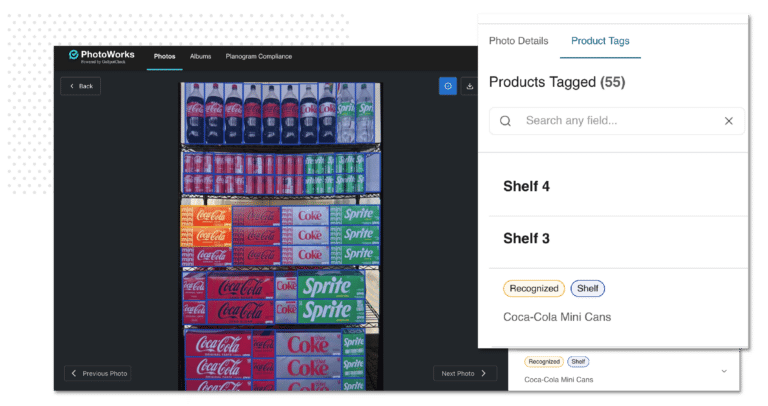Directing teams in the field requires constant monitoring and meaningful analysis. Yet, many organizations with field inspectors, work crews, and mobile technicians suffer from the same pain points they experienced twenty years ago. In this blog, we’ll discuss the three biggest problems we see companies struggle with in the field and share what we’ve learned from creating solutions for some of the biggest brands in the world.
1. Reactionary Corrections vs. Preventative Actions
It’s a concept even people outside the world of fieldwork can understand: it’s better to stop problems from spreading than to deal with the symptoms alone. But how can you stay ahead of problems if you don’t know when, where, and how they’re occurring until hours, days, or even weeks later? The answer is to connect the discovery of a problem directly to the solution.
The first step is creating workflows that have meaningful interactions with the forms you use in the field. If a worker discovers a malfunctioning machine during a routine field inspection, their next move should be to gather all the information a technician or supervisor needs to find the machine, identify the problem area, and take corrective action.
Of course, this is a much more complicated series of actions when handled on paper, via email, or by phone. Mobile forms can give your workers the tools to uncover issues in the field, capture images of the specific problem, and immediately trigger a follow-up task for another employee. FORM specializes in taking your existing forms and workflows, creating digital, optimized versions, and deploying them as a self-sustaining platform for fieldwork.
Click here to see how FORM optimizes workflows with automated forms using your organization’s unique process.
Next, be consistent about how workflows operate in your organization. Each situation should have a clear path based on the conditions, and no one should be “throwing an audible” during the process. To ensure that everyone takes the same steps to move tasks along, automate as much as possible. The fewer decisions employees have to make, the sooner you can get ahead of issues before they escalate.
2. “Pencil Whipping” vs. Reliable Reporting
When it comes to recording data faithfully and accurately, you can only rely on the quality of an employee’s training if they’re working with paper forms. Worse still are employees who “pencil whip,” or only pretend to be on-site when they fill out forms. It’s an unfortunate reality that many fieldworkers will only go through the motions, leaving you with unreliable and unrealistic data.
One way to combat this behavior is by requiring employees to attach an image of the work site along with their forms. Of course, you’ll have to ensure they aren’t simply emailing you the same image every time, and that means extra work for their supervisors. Another way is less direct, but yields definitive results: GPS logging.
Using a smartphone or tablet with GPS location capabilities, FORM can use a technique known as “GPS fencing,” which prevents workers from filling out forms unless they’re on the job site. This is tougher to do for areas well outside the range of mobile data, like oil rigs, mine shafts, and mountain ranges, but a combination of photo validation, GPS fencing, and strong supervision can keep
But what about employees who are doing their best yet struggle to remember procedure? Fortunately, mobile forms offer them some simple solutions: branch logic and in-app reference information. With branch logic, each step of a task is offered in the right sequence, only showing more specific questions if a user’s response makes them relevant. When you include contextual reference data, such as a diagram of passing and failing conditions, employees have clear guidelines for how to proceed.
3. Recordkeeping vs. Dynamic Planning
It’s one thing to simply collect reliable, accurate data, but it’s something else entirely to put that data into action. We already talked about ways to get ahead of problems by using workflows within forms, but what about long-term opportunities to put data to work? One of the most common issues we see when we first start working with a company is a large collection of data silos. They have mountains of data, but it’s not connected to anything directly.
The biggest hurdle to overcome is how you organize your data at a glance. If you have to wade through spreadmarts filled with irrelevant data to understand how fieldwork is going, you’ll struggle to visualize the effects of changes. By the same token, if you’re trying to make long-term plans, using static reports that don’t contain the latest data from the field keeps you from seeing a complete picture.
FORM’s dashboards not only provide oversight at a glance, but they also can be customized to your organization’s unique needs. All the information relevant to your fieldwork appears in a clear, digestible format, giving you both deep understanding and quick insights into your field teams’ performance. With our custom reports, you’ll also have the most up-to-date cross-sections of your data, automatically filtering and sorting information based on your parameters.
Pain Points or Blind Spots?
Nothing hampers fieldwork like gaping data blind spots. What do all three of these fieldwork frustrations have in common? For one, they can all be mitigated or prevented with solutions that automate processes or otherwise remove decision-making power from frontline workers. More importantly, they all stem from how your business collects, organizes, and uses data. Chaotic organization tends to create chaotic results. Attention to detail, clear standards, and consistent execution will give your company the long-term advantage you need to thrive.
Until you alleviate the pain points plaguing your employees, they’ll be suffering under what they perceive as a top-down problem. Besides wasting time and resources on aligning your field employees manually, worker dissatisfaction bleeds into the quality of your service. Don’t leave your fieldworkers out in the cold. Address the pain points of field service management before they undermine your success.




